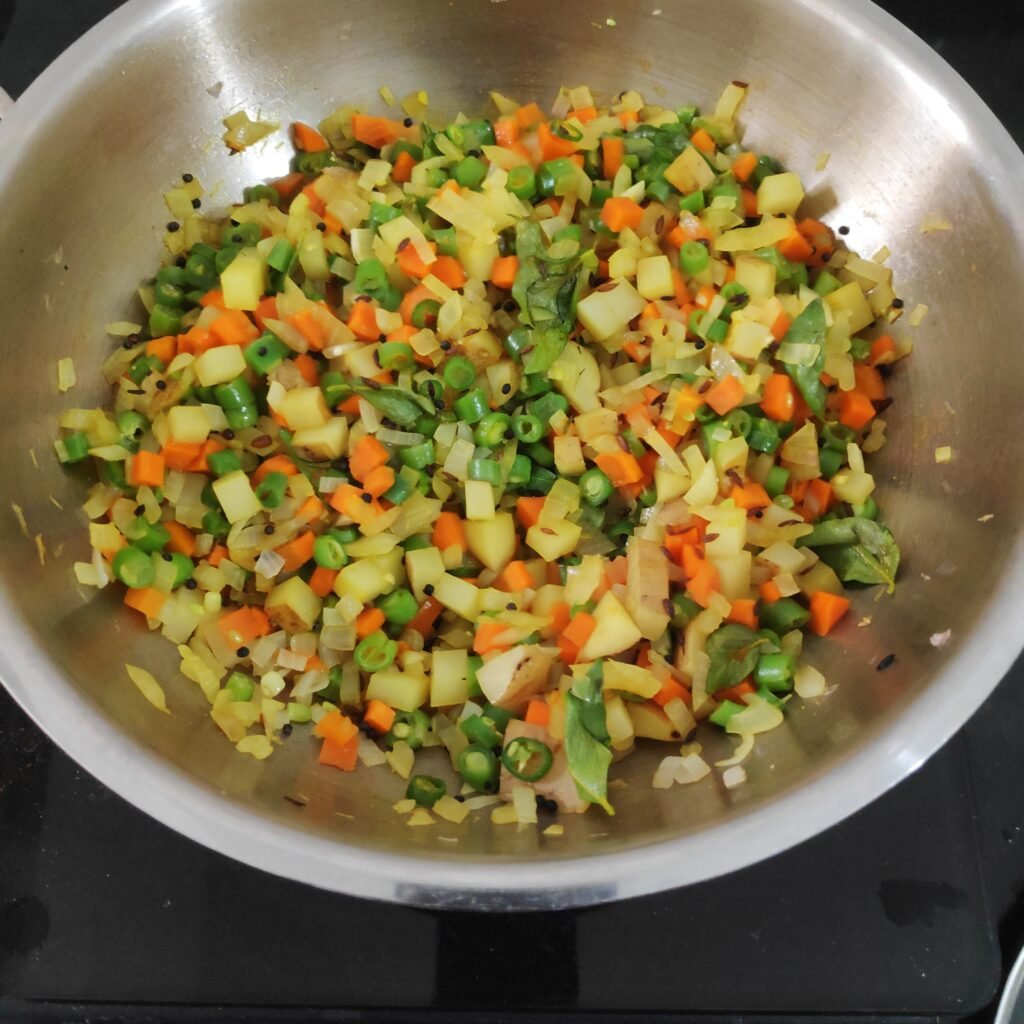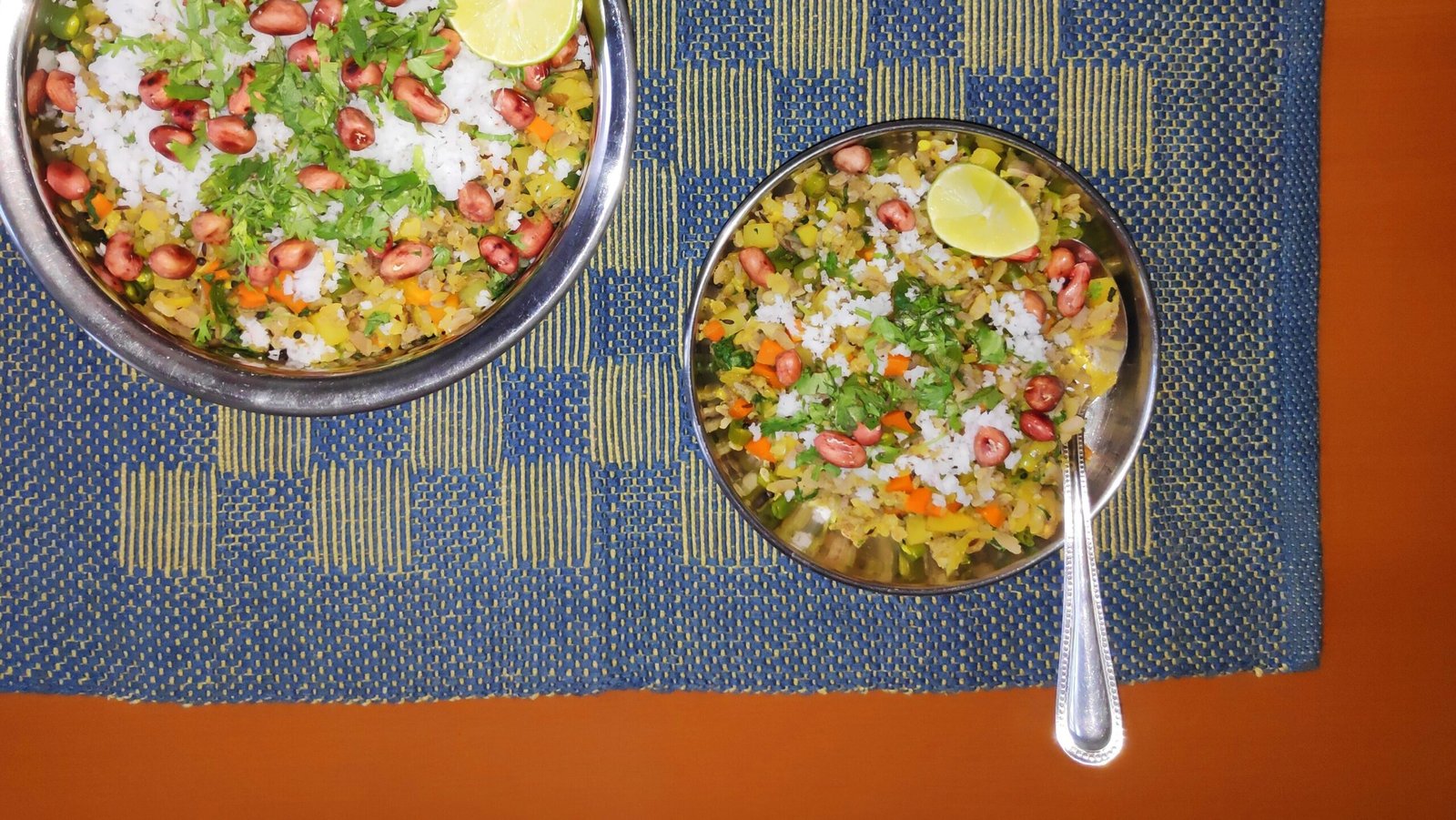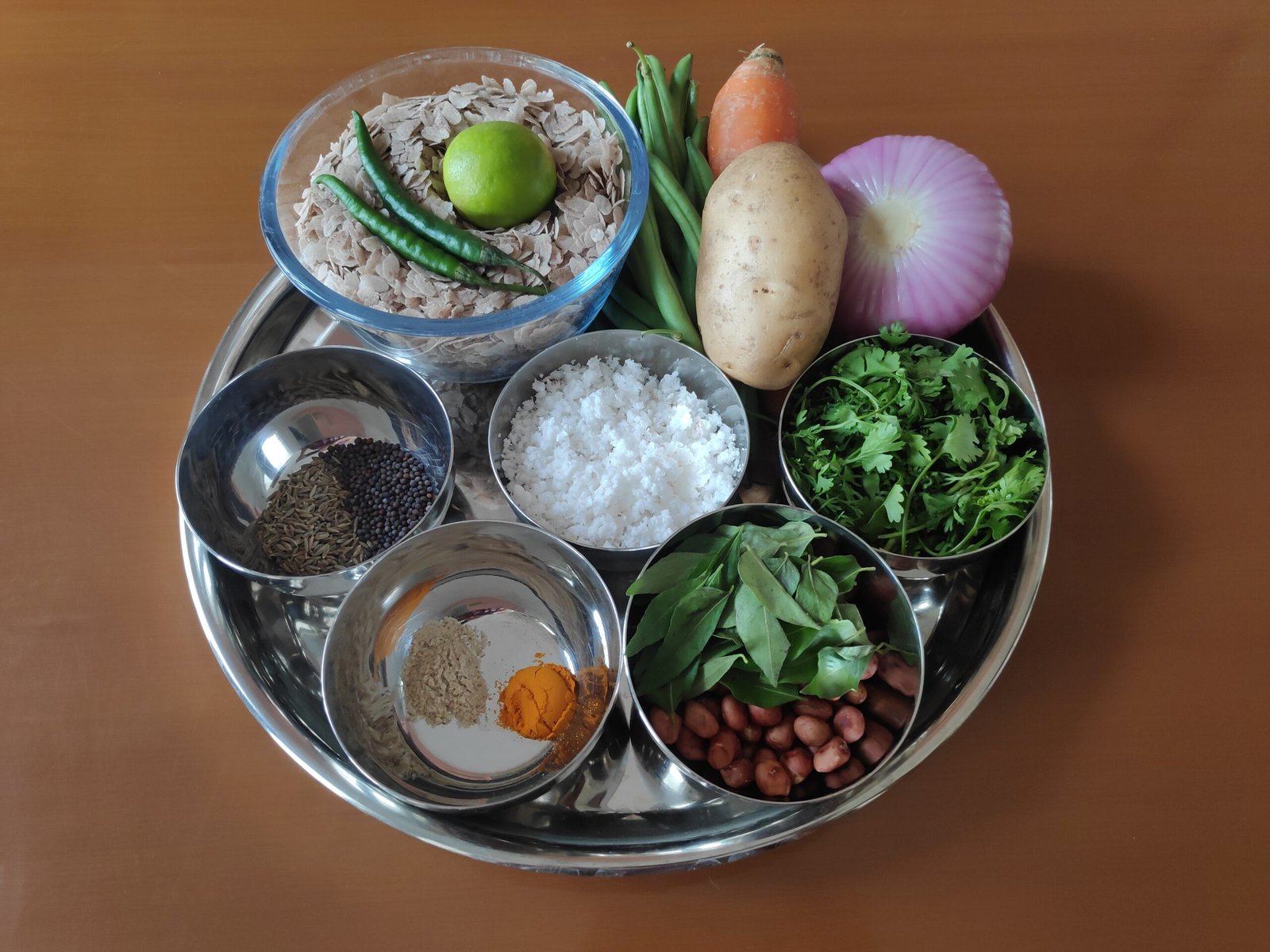Recipe credit: Darshana Muzumdar
Serves 4 as a main breakfast dish
Ingredients
- 150 gms (1½ cups) red rice poha
- 1 large onion
- 1 small carrot (50-70 gms)
- 20-25 French beans (75-80gms) or ½ cup green peas
- 1 small potato (100 gms)
- ½ tsp mustard seeds
- ½ tsp cumin seeds
- ¼ tsp asafoetida
- ¼ tsp turmeric
- 2-3 sprigs of fresh curry leaves
- 2-4 chillies depending on the degree of heat
- A handful of fresh coriander
- 1-2 limes
- ½ cup of fresh coconut grated (optional)
- ½ cup or a small handful roasted peanuts (optional)
- 2 tbsp groundnut oil
- 1½ tsp salt or as per taste
Method
Dry roast peanuts on medium heat till they change color lightly and lose their raw flavor. Peel and chop onions. Chop carrot, beans, potato, (around 2 cups) and green chillies finely . There is no need to peel the potato or carrot. Wash the red rice poha very lightly in a pot of water and drain in a colander immediately. Leave aside in the colander. It will become 2 cups when soaked and allowed to rest. Heat oil in a deep iron kadhai (wok) or a thick bottom steel pot and add mustard seeds and cumin seeds. Once they splutter add curry leaves, green chillies, and onions and fry till the onions are translucent and light golden in color. Add asafoetida, turmeric, vegetables, and salt, adding a little water if necessary, and cook until they are almost done. This should not take more than five minutes as all the vegetables have been chopped finely. Add poha, mix and cook covered with lid for 2 minutes on low to medium heat. Add chopped coriander, mix and serve garnished with peanuts or coconut or both and a piece of lemon on the side.
For the Whole-Food Plant-Based (WFPB) version:
Put the chopped onions in a thick bottom steel pot, add half a cup of water, cover and cook on low heat for about 3-5 minutes or more until the onions are soft and translucent. Keep adding a tablespoon of water if it begins to catch at the bottom. (Alternately, add the chopped onions in a small steel pressure cooker with half a cup of water and cook for one whistle. Turn off the heat and let cool.) Heat an iron tempering ladle. Add mustard seeds and allow to splutter. Transfer this to the onions. Add cumin seeds, allow to splutter and add to the onions. Add asafoetida and turmeric and sauté for three or four seconds taking care not to allow it to burn. Transfer to the onions. Add curry leaves and sauté till light brown or till they release their aroma. Add to the onions. Add green chillies to the onions without frying as they may cause you to cough if roasted. Add the chopped vegetables and enough water to allow the vegetables to cook well. Add salt and mix the vegetables. If the vegetables are dry add a quarter cup boiling water. Break up any lumps in the poha in the colander and add it on top of the vegetables. Make three holes in the poha and vegetables by poking the back of a tablespoon till the bottom to allow the steam to rise to the top. Do not mix the vegetables and poha as it may stick to the bottom. Keep covered and cook on medium to low heat for three to five minutes allowing the poha to steam well. Take care not to allow the vegetables to burn at the bottom of the pan. Add a couple of spoons of water to prevent this if necessary. Once done, add coriander, mix well and dish it out in serving bowls garnished with peanuts and/or grated coconut if using. Put a wedge of lemon in each bowl.
Note: This may take a couple of tries to get it right if you use white poha instead of the red rice poha. White poha tends to lump up if soaked too much.





Share this:
- Click to share on Facebook (Opens in new window)
- Click to share on WhatsApp (Opens in new window)
- Click to share on Twitter (Opens in new window)
- Click to share on Pinterest (Opens in new window)
- Click to share on LinkedIn (Opens in new window)
- Click to share on Skype (Opens in new window)
- Click to share on Reddit (Opens in new window)
- Click to share on Tumblr (Opens in new window)
- Click to share on Pocket (Opens in new window)
- Click to share on Telegram (Opens in new window)
- Click to print (Opens in new window)

